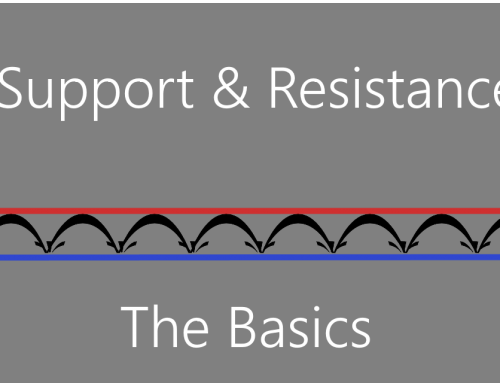Market indicators can shed light on the future movement of stocks or the overall market. These indicators and market measures are only moderately useful when viewed independently. However, when viewed as a whole, the trader can often spot changes in trends early and sometimes make market forecasts based on the strength of various indicators. One of these often-misinterpreted market internals is the New Highs – New Lows.
New highs and lows is one of the broad measures of how bullish or bearish the market is during a particular time. Let’s begin by looking at a website that gives a delayed look at some important market internals. Click on this link. http://quote.yahoo.com/m0?u
At first glance you’ll see Advancing, Declining and Unchanged Issues, then New Highs and New Lows. Across the top you’ll see NYSE, AMEX, NASDAQ and Bulletin Board. Are the numbers bullish? Before we can make that call, we need to understand what the numbers mean.
New Highs and New Lows
First, keep in mind that the reported new highs and new lows represent the number of companies (issues) hitting 52-week highs and lows. You can see a list of stocks making new highs and lows by going to the following site: http://quote.morningstar.com/highlow.html
Quickly review the list of companies. There are a number of things that we can learn from looking at this list. First, look at how many new highs there are compared to new lows? Does either list include many well-known names? Are the new lows mostly penny stocks that would probably be on shaky ground no matter how the market was doing? Are there obvious sectors or industries at highs or lows? Asking these questions can help you to begin to notice some details about the state of the market.
What difference does it make if there are a lot of new highs or lows? It depends, but let’s begin with an extreme example to explain a point. Assume we have been in a bear market and that XYZ stock and all other stocks in the same sector have been trading lower in a narrow range of say 10 points over the last 18 months. Once high fliers, XYZ and related stocks are all well off their all-time highs. The current day’s sector news is optimistic and all the stocks move up 12 points. In one sense, the resulting new highs are substantially overstated because these stocks aren’t really at new all-time highs, just new 52-week highs. The longer-term trend may still be downward or flat, however the jump in new highs does show that there is strength enough in the market to at least consider a purchase.
In most cases the above nuance won’t be significant, but again, understanding that we are looking at “52-week highs” and not “all-time highs” can make a difference in our conclusions. With this in mind, what information can we gather from the new highs and new lows for the day? Bottom line, the greater the number of new highs vs. new lows, the more positive the indication of market strength and momentum. Daily New Highs and Lows can substantiate a market move up or down for THAT DAY. However, the real key to utilizing this information is attempting to determine future movement in the markets.
If we see 200 NASDAQ New Highs and 25 NASDAQ New Lows on a day that the NASDAQ moved up just 35 points, what does it mean? It indicates that on that day, there was a strong, broad-based move higher and that this strength is probably going to help push the market higher in the near future. Taking it a step further, let’s look at an example of fictitious new highs/new lows over 7 days and then a jump in time to the 30th day:
| Day -> |
Day1
|
Day2
|
Day3
|
Day4
|
Day5
|
Day6
|
Day7
|
Day8
|
| Nasdaq New Highs |
61
|
82
|
75
|
98
|
121
|
115
|
137
|
200
|
| Nasdaq New Lows |
95
|
83
|
85
|
67
|
35
|
42
|
37
|
25
|
New highs are generally trending higher and new lows are generally trending lower. This is a nice signal that the market is strong and getting stronger. Does it mean that the NASDAQ will move higher tomorrow? Not necessarily, but overall, these (fictitious) numbers show that the NASDAQ still looks strong and we wouldn’t be nervous putting our capital to work.
Sources of Information
There is a tremendous amount of information available to those who are interested in doing a little homework. Below is a web site that tracks the historical new highs/lows. It links the multiple daily measures together to show current trends, which are the most useful in forecasting future trends. By clicking on the links below you can graphically view the NYSE or NASDAQ new highs-lows historical trend and see the correlation with the price movement of the NYSE and NASDAQ composite index.
http://stockcharts.com/h-sc/ui?s=%24NYHL NYSE New Highs – New Lows Chart.
http://stockcharts.com/h-sc/ui?s=%24NAHL NASDAQ New Highs – New Lows Chart.
How to read the charts: The New High – New Low indicator normally reaches its lows just before a major market bottom. Then as the market starts to trend higher, the NH-NL indicator will often climb quickly. As we head toward a top, the NH-NL will begin to diverge from the index as the index continues to climb. This is a bearish signal of weakness.
What are the Charts Telling Us Now?
Following the September 11th attack, the NASDAQ and NYSE New Lows obviously surged as the market immediately tumbled. This type of sudden and unusual collapse broke down previous trends and the new trends take some time to build. Following the September 11th attack, the NASDAQ and NYSE New Lows obviously surged as the market immediately tumbled. This sudden and unusual collapse broke down previous trends, and the new trends take some time to build. That said, it does look like the cumulative NYSE and NASDAQ New Highs/New Lows have stabilized and begun moving higher, confirming the move higher by the market. The weekly chart gives a broader view of the current situation and the daily chart may be more useful in noticing the next change in direction.
Indicators like the new highs and new lows tend to substantiate rather then predict price movement. These charts, when used with other indicators, can be valuable in monitoring the strength of a move in the market and recognizing a shift in its direction.






